#croghans
Explore tagged Tumblr posts
Text

instagram.com/croghans/
Yellow diamond
1 note
·
View note
Text


GAVIN CROGHAN
127 notes
·
View notes
Text

Adams Hill Road, Croghan, New York.
35 notes
·
View notes
Text

i have nowhere else to post my bog body images. be free my boggies
#not even tagging this. it will find the intended audience#in order left to right tho: weerdinge men windeby i old croghan man lindow man#tw gore#tw bones
11 notes
·
View notes
Text
old croghan man was in his early twenties... he should have been at the club...
2 notes
·
View notes
Text
OLD CROGHAN MAN
OLD CROGHAN MAN
Bog body discovered in Ireland in 2003
The Old Croghan Man is a preserved torso and arms of an Irish Iron Age body which was found in June 2003. The remains were found in Croghan Hill, north of Daingean, County Offaly.
In his own life time he would have been 1.96 metres tall; his nails were well-kept and was in good health at the time of his death. He lived around 362-175 BCE. He was killed by a knife in the chest. A cut on his upper arm shows he faced his killer and tried to deflect the strike. After death, he was decapitated and his body was sawn in half.
Today the body is on display at the National Museum of Ireland in Dublin.
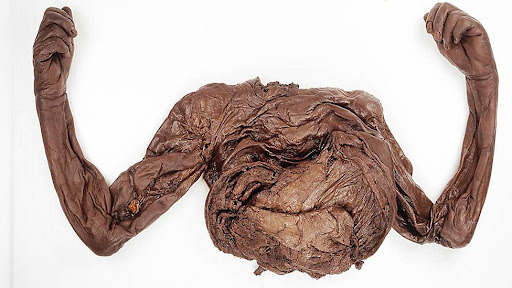
#oldcroghanman #bogbodys #ireland #croghanhill #history
3 notes
·
View notes
Text

#submitted#movies#polls#love and other catastrophes#frances o'connor#alice garner#emma-kate croghan#ended#result: unheard of
3 notes
·
View notes
Photo
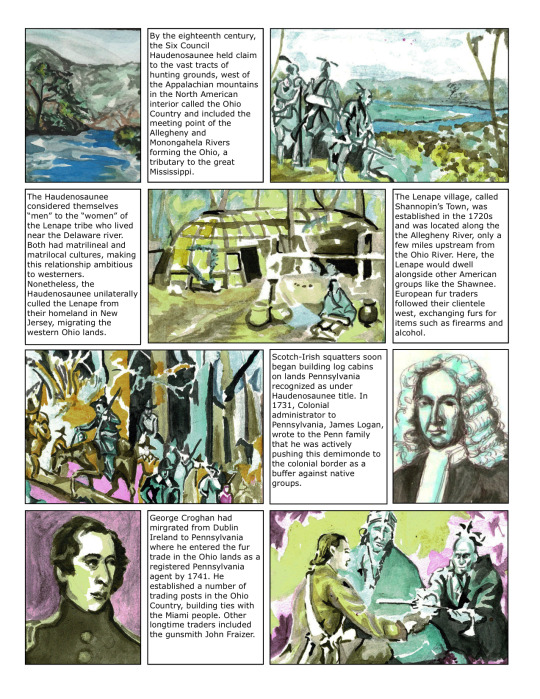


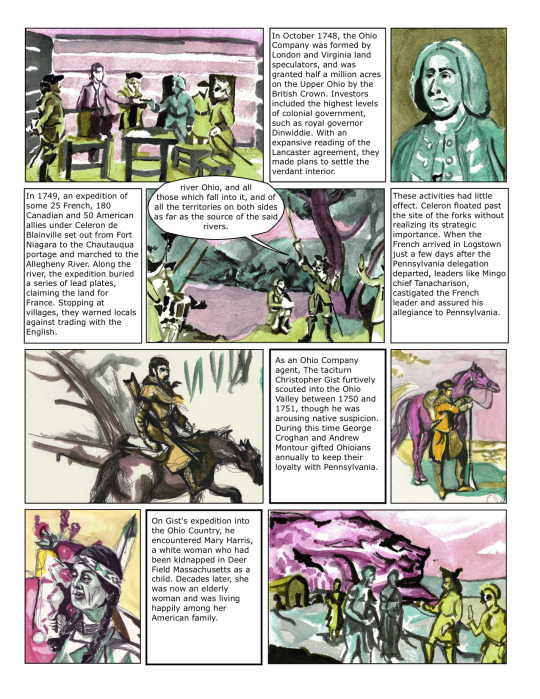
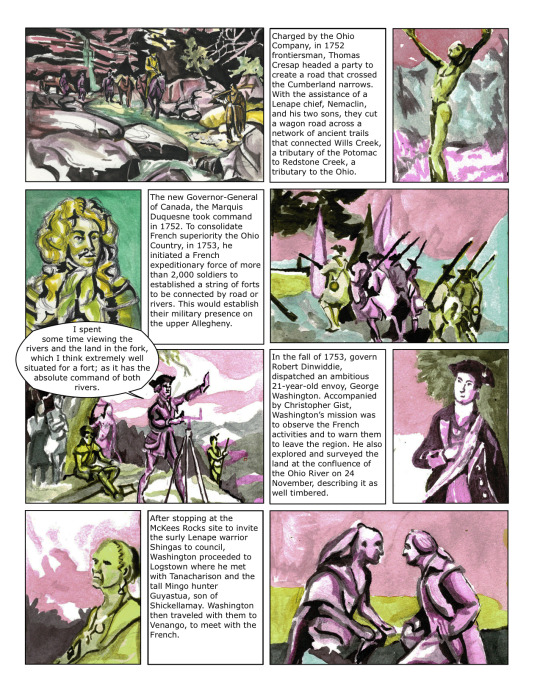
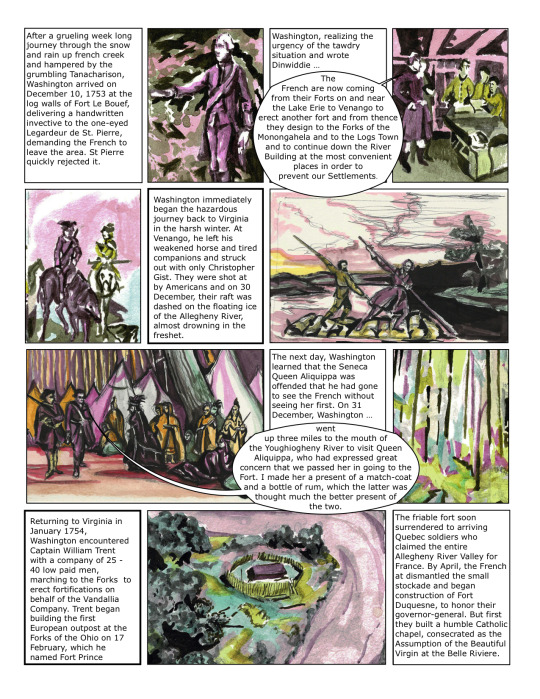


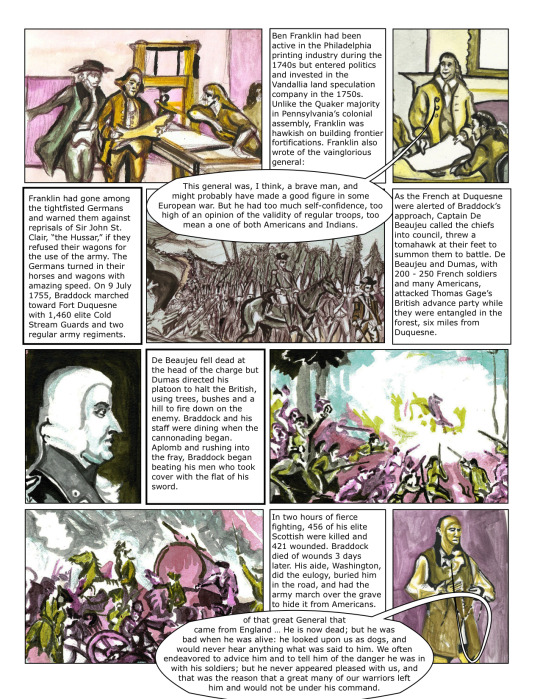
Pre-Pittsburgh: Memo and Personal Statement
This fake comic takes places two hundred and seventy ago, in my hometown. Pittsburgh’s cherished founding stories traditionally begin with a cameo from historical a-lister, young George Washington, on his hero’s journey. The Old Block House and the Fort Pitt museum literally stand today as physical testaments of imperial ambition in a bygone age that made the city what it is today. The stories of George Washington and Fort Pitt have been told over and over again since time immemorial, so what is there new to say in retelling this story in fake comic form?
First off, this fake-comic is rife with tooty-fruity images of “Ohio Country” between 1748 – 1755. Brick-by-brick and cell-by-cell the Pittsburgh tale slowly builds. While I usually start by just doing lots of studies of previous historical imagery of the place and time, my research left me wondering down other aspects less explored. While George Washington wasn’t the only military dude in the area, the traditional history tells of a syndicate of various military dudes that who came to the wild west of “Ohio Country” to establish imperial domain. There are also white traders and American chiefs as other “agents” that move the story along.
Pittsburgh is the 68th largest city in the United States, it’s one of many places that made contributions to a national historical narrative and it of course experienced national and global phenomena, aside from being home of the Steelers.
Generally, I’m more interested in social history over generation instead of the hijinks of individual military dudes. I just didn’t have the sources to make the entire narrative around Pittsburgh’s social structure of the eighteenth century. This fake-comic turned out to be more of an exercise in telling the old stories.
The book for this time period that really broadened my horizons was Into the American Woods by James Merrell that narrates the translators and negotiators between the state of Pennsylvania and Native American groups, mainly the Haudenosaunee, who were centered in upstate New York, but had claims to the region. Merrell’s interpretation of the events at Fort Duquesne and Fort Pitt are very different from other interpretations on the cause and effects transpiring at the forks of the three rivers. The native people who lived in the region, who had broken free of Haudenosaunee and allied with the French, even helping expel Braddock’s forces in 1755 against the English. History would remember Braddock as Pittsburgh’s first jagoff.
Perhaps in second installment I can present how critical the Ohio Native Americans were in determining which empire would be the victor.
#tanacharison#fort duquense#george croghan#andrew montour#conrad weiser#french and indian war#history comic#pittsburgh history
9 notes
·
View notes
Text

croghansjewelbox.com
Charleston Skyline Cuff Bangle with diamonds
0 notes
Text
This is not a carved wooden hand, but a close-up of a 2300 year old Iron Age bog body called "Old Croghan Man". A bog body is a human corpse that has been naturally mummified in a peat bog. It was found in 2003 on Croghan Hill in Co. Offaly in Ireland. The man's apparently manicured fingernails led to speculation that he was not someone who performed manual labour, so was possibly of high status. The man was buried in a bog (probably once a lake) at the foot of an ancient hill that was used for kingship ceremonies by the Druids, probably as a sacrifice to the gods.
The body is now on display at the National Museum of Ireland in Dublin.

Esto no es una mano de madera tallada, sino un primer plano de un cuerpo de pantano de la Edad de Hierro de 2300 años llamado "Old Croghan Man". Un cuerpo de pantano es un cadáver humano que ha sido momificado naturalmente en un pantano de turba. Fue encontrado en 2003 en Croghan Hill en Co. Offaly en Irlanda. Las uñas aparentemente manicuradas del hombre llevaron a la especulación de que no era alguien que realizaba trabajos manuales, así que posiblemente tenía un alto estatus. El hombre fue enterrado en un pantano (probablemente una vez un lago) al pie de una antigua colina que fue usada para ceremonias de reyes por los druidas, probablemente como sacrificio a los dioses.
El cuerpo está ahora en exhibición en el Museo Nacional de Irlanda en Dublín.
fuente: descubriendo el pasado
1 note
·
View note
Text

Implications for Snake Evolution:
Morphology and systematics of a new fossil snake from the early Rupelian (Oligocene) White River Formation, Wyoming
Jasmine A Croghan, Alessandro Palci, Silvio Onary, Michael S Y Lee, Michael W Caldwell
Abstract
Extinct snake taxa are recognized primarily from isolated vertebrae. A new specimen from the early Oligocene of Wyoming provides a rare opportunity to examine four nearly complete and articulated fossil snakes.
Informally assigned previously to the ‘erycine’ vertebral form taxa Ogmophis and Calamagras, a detailed comparison reveals that this fossil snake exhibits vertebral differences from both taxa and is, furthermore, a new taxon, Hibernophis breithaupti gen. et sp. nov., based on a combination of apomorphies such as absence of basal tubera, low subrectangular prootic, low parasphenoid wings obscuring the anterior opening of the Vidian canal, and foramen for the mandibular branch of the trigeminal nerve posteriorly displaced inside the adductor fossa of the compound.
Parsimony and Bayesian phylogenetic analysis of combined morphological and molecular data from a broad selection of snakes places Hibernophis breithaupti as sister taxon to all other booids, distant from both Old and New World ‘erycines’.
However, an alternative position close to New World ‘erycines’ and ungaliophiines cannot be rejected.
Read more: https://academic.oup.com/zoolinnean/advance-article-abstract/doi/10.1093/zoolinnean/zlae073/7696309
141 notes
·
View notes
Text

"Sleepers in the Peat," 2022.
two years ago I wrote a short story. finally got around to posting it.
The water was bitter here. Beneath thick layers of branching sphagnum moss, it rose from the earth in drips and drenches, pooling in little reed-ringed ponds and lying smooth as glass. A faint curtain of mist drifted across the bogland, obscuring the far-off tree-line and rendering the world somewhat distant from the clear light of the morning.
It was beside one of these little wells of peaty water that she crouched, clipboard and pencil in hand, the raincoat drawn over her broad shoulders a green only a shade less saturated than the moss. Her name, scribed in graphite across the top of her sheet of notes, was Theo-short-for-Theodora, a fact that she had had to explain nearly every time she introduced herself. She had shaped it better to fit herself, although out in the silence of the marshes, there was very little need for such a thing as a name.
Kneeling now, Theo dipped a gloved hand into the water, pressed the acid-tangy water to her lips. She breathed in, and breathed in bitterness. Fibers of moss crept into her nostrils, taking root in her lungs like branching alveoli. This, then, was the culmination of all her work, all her study, the taste of it at last on her tongue.
The faces of the ancient dead had always fascinated her. Their empty eyes, skin smoothed by ice or desert to touch the contours of the skull, lips drawn back from ground-down teeth. It was not the frozen explorers with their eyes still wide and dove-blue that captivated her, nor the ancient kings with their desiccated, dead-lizard hands, nor yet the strange distorted faces of those preserved beneath honey until even their bones took on a sweetness. Theo, young, had traced the crisply-printed pictures set on slick photo-paper in the centers of her books, memorizing the images of those gone down and buried in the peat. She became something of an expert in names that her schoolmates did not recognize, Tollund and Lindow, Windeby and Old-Croghan. They lay still in black-and-white against their backgrounds of sand, so unlike the living people that walked just beyond her windows, and Theo, in her way, preferred that stillness.
Still, she watched the living move all the same. There was a casual grace to them that fascinated Theo, the way in which hips shifted as the feet fell one in front of the other, how hands settled in close at the waist. She herself stood with her hands apart, her thumbs tucked into the loops of a belt.
Just as other children had run in gleeful circles on the blacktop while she stayed inside, book in hand, they kissed and laughed now in dizzy blue-dawn hours. Theo preferred to sleep instead, lazing curled in bed while the world spun by outdoors. Dressed in pajama trousers with torn-out knees and rolled-up hems, she drew layer after layer of blanket over herself, sinking deeper into the quiet dark. In those solitary nights, though, she sought nonetheless, and dreamed of moss beneath her fingers, of the strange faces of the mire-mummified dead. She would see them sure and true one day, Theo knew, and know the taste of the same tannin that so preserved them.
The North, that was where they were to be found, where ancient peat tracked patchily across Europe and left the dead preserved in its wake. Her grandmother had called that place homeland, and Theo had scoffed behind her hand. What connection had she, really, to that place? Without invitation, she could not walk on that soil with the sort of fierce pride that her grandmother held onto so tightly.
“You’ll see one day, Theodora,” her grandmother said, and nudged back the crooked postcards of green, green hills that had slipped slightly from their places on the refrigerator. The words sat sourly around Theo’s shoulders, and with time, refused to rot away.
They clung, sticky and leaden, and Theo would have liked to scream at the feeling of them. What did her grandmother know, she with her good marriage to her good man, her ticking, soap-sweet house, her fine bed in the back bedroom where she slept as contentedly as a cat? Her grandmother’s hair was short in the fashion of old women, cut so that it hid how pale and thin it had become. Theo’s own hair was just as short, cropped by hand in a dim mirror with a sort of ferocity intended to put the viewer in mind of steel-toed boots and hard-wearing canvas. No use putting them back to back and calling them the same. And so, Theo shut her mouth, dragged her hand down the side of her face as if to tie shut her jaw. For all that she railed against those words, the postcards pinned against the refrigerator door were green, green, green.
Try as she might, Theo never slept well in her grandmother’s house. The air was hot and resolutely mint-sweet, the blankets thin against the heaviness of summer. Time was just as heavy there, a clock always ticking away beside the cabinets in the kitchen, machinery humming uselessly within the walls.
Theo crept from the house and settled in the still-warm chair on her grandmother’s far-too-neat lawn. It had been cut to within an inch of its life just that morning, the first of those two precise twice-a-week rounds of mower and rake and clippers that kept the street-facing yard perfect. All the same, in the warm night, Theo’s skin stuck, sweaty, to the plastic slats of the chair, and the heat of it felt far too alive for her liking. She peeled her arms away from it, drew her knees to her chest, sat folded up in herself like an Andean king of old. Behind her eyes, all was green, the green of hollow hills and deep water.
So she thought on it, and so she laid her plans. She did her work with a tired slowness, her motions static and mechanical even as the tasks, somehow, managed to get done. The grinding stasis of daily life dragged forward, every sample of moss and spreadsheet of data creeping closer to the proper work in the field she sought. And then, all in a maze of mist, there she was in the North of the world, the treads of her boots sinking into wet sedge as the fog drew itself in close around her.
There were other sorts of bogs than the sort that made a face into such a bitter ambrotype as those that so fascinated her. Theo had seen the ones where cranberries were grown before, red as all love in the dark water, crisscrossed with boards to serve as footpaths. This was not such a bog, and made no such deceptions about its helpfulness or its safety. This was peat all the way down, heavy and wet and certain. In another thousand thousands of years, pressure would render that peat down to coal, and in another circling of time, perhaps diamond. All carbon, just as she was, and no light. Cool, static, stable, deep, the water still as it filtered slow and soft through the moss. Not so kind, no, but all the same it might hold her gently in the wide green palm of its hand.
So she knelt down into it, uncaring of the stains it would leave on the knees of her trousers, twined her fingers in among the curls of sphagnum. Pulling it away in fraying chunks, as perhaps the ancestors her grandmother had spoken of had done, Theo dug, watching water rise, grey and changeable as the sky, to fill the opening she had made in the peat. Down below, she knew she would find what she had searched for for so long. And oh — her hand met slick solidity, not peat at all.
The girl in the bog was unchangeable, frozen in amber. She was no body behind museum-glass, lying in state as if to be awoken by a kiss, but sleeping fast in untouchable earth. Her face, leathery and smooth, was unwrinkled despite the years. She could have been born the very same day as Theo, for all that the centuries showed upon her skin. Her hair, falling wispy about her face, had been reddened by hundreds of years of tannins. The sun caught upon it and turned it to the gold of autumn-dried acorns, sharp as straw. There would be grit in her mouth, dust from the rough millstone that had ground down grain, hardly noticeable behind the rich green smell of the bog.
Gloved hands scraped away wet threads of moss, smoothing over skin with as light a touch as Theo could manage. Under her fingers, the girl shifted, drawing up her shoulders as she yawned. Her eyes stayed closed, but all the same, Theo felt that she was seen.
The girl raised herself up languidly on one elbow, water sloughing off in trickles and streams from every seam and crevice of her body. Her ribs stood out in perfect parallel, still wrapped tightly by the skin of her sides.
“Hello,” said Theo, not knowing what else to say. The girl in the bog smiled at her with crooked, blackened teeth, and reached out to her. Her hands were small, round, doll-like, but still soft as burnished leather, the fingernails as neatly trimmed as if she had cut them the day before the peat closed over her.
She stroked the buzzed-short ends of the hair at the back of Theo’s neck as she leant closer, drifts of wet soil sloughing from her skin, and frowned.
“Why did they cut your hair?”
“I cut it myself. I liked it better that way — it felt right to do it before I came here.” Then, pausing, seeing the wind flick at her rust-red, blunt-hacked locks, “Did you—“
“They cut it before they sent me here. But it fits, doesn’t it? It was you that made yourself ready for me.”
“I suppose it was,” said Theo, and meant it. There was a rightness to it, a reason that she had not put words to before.
“Come down with me,” she said, and Theo could not help but follow. Half-laughing, she thought of the promises of the red-haired rusalki she’d read of in her books of tales. To walk down into the sweet water and meet a maiden there, and hear her speak words just as sweet of eternal youth in her kingdom down beneath the riverbed, was an old story, and one that she might find herself believing now. But the water of a peat bog is bitter, as are all things that keep memories safe, and it wasn’t youth, but eternity only, that the girl in the bog had promised her.
To be preserved, young arms entwined with ones that centuries ago were young, was all that she’d receive. But what more had she desired to begin with? The choice had been made long before she had ever set foot there. Theo extended a hand, stripped off its pale blue latex glove like a snake shedding its skin. Placing it atop her clipboard, she set aside the plastic barrier as if laying out an altar’s worth of grave-goods. She shucked the green raincoat and heavy backpack from her shoulders — she’d have another coat of that same verdant color where she was going, once the moss had closed over the both of them. Then, lowering herself feet-first into the open space amid the moss, Theo leaned down and met the girl’s mouth with her own.
The kiss was thick with pollen, and Theo inhaled it without any of the fear she had previously associated with such things. There was a sweetness to it, a choking flavor of juniper and sap as it poured like sand into her throat. Theo wondered, a little, that she could breathe through it, but it was no longer a time for wondering. Instead, her eyes slid softly shut, and the cool, deep darkness was all that remained. It was not the iron-red dark of closed eyes in sunlight, but a bitter and at the same time refreshing green-dark, a soft sort of shadow that spoke of nothing at all but the faintest edges of dreams.
Drawing the peat back over them, the girl curled herself fast around Theo’s back, cradling her in earth as if in the palm of a hand. Twining together beneath the moss, the water crept up over them both one more. As Theo sank, her eyelids slipped closed, and her head drifted downwards all the while. It twisted sideways on Theo’s neck, slipping bonelessly forwards, and down with it she went into dreamless sleep, bog water growing ever sweeter in her mouth.
#em writes stuff#oc time again hehe#bogstory#there are some things that I would do differently if I was writing this now. however this one is going to be what it is.#look! they are posting an original ghost story on a day Other than halloween! what a rare occurrence!
93 notes
·
View notes
Text
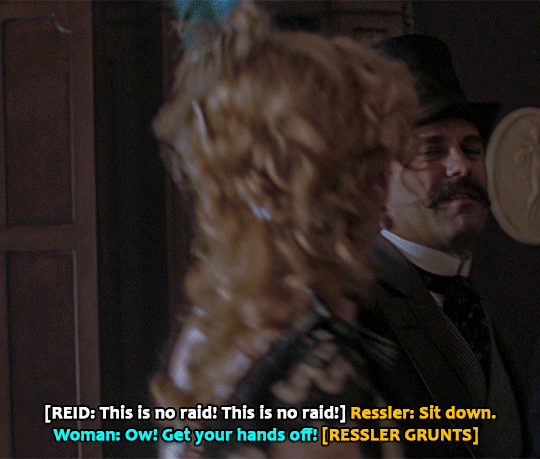
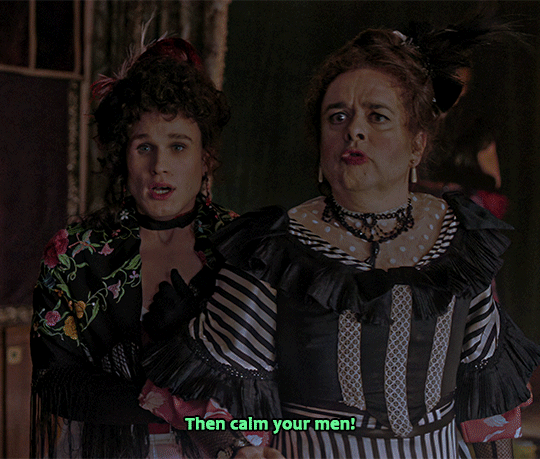
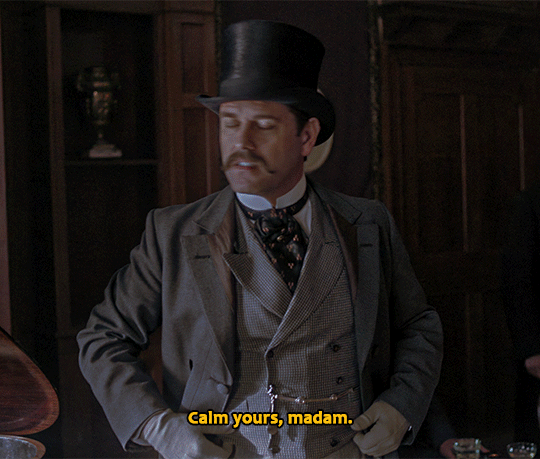
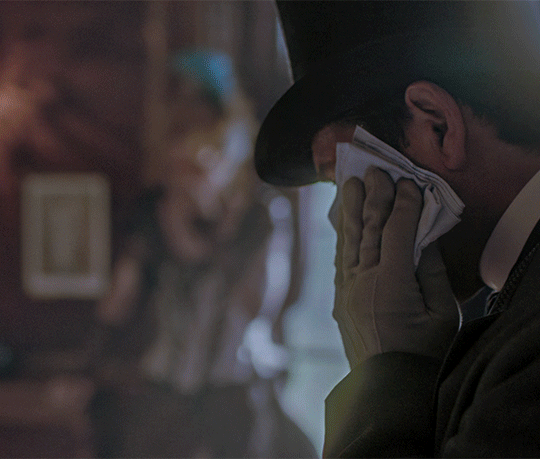
'The King Came Calling' RIPPER STREET ∙ S1.E3 ∙ writ. Declan Croghan & Richard Warlow
#u just know the writers room was giggling kicking their feet high-fiving each other after that line 👀👀👀#ripper street#matthew macfadyen#edmund reid#perioddramaedit#history#queer#cross dressing#trans history#queer history#period drama#victorian era#victorian#sidney ressler#patrick baladi#queer characters
19 notes
·
View notes
Text
#OTD in Irish History | 3 July:
1746 – Henry Grattan, Irish statesman, is born in Dublin. 1798 – United Irishmen Rebellion: Remnants of Southern column reach Croghan. 1853 – Birth of painter, Aloysius O’Kelly in Dublin. Aloysius’ brothers, Charles and Stephen, also became artists, whereas the eldest brother, James J. O’Kelly, set forth on a successful political career. In October 1881, Charles Stewart Parnell was arrested and…

View On WordPress
#irelandinspires#irishhistory#OTD#3 July#Co. Kerry#Ireland#Irish Civil War#Irish History#Irish War of Independence#Today in Irish History
8 notes
·
View notes

